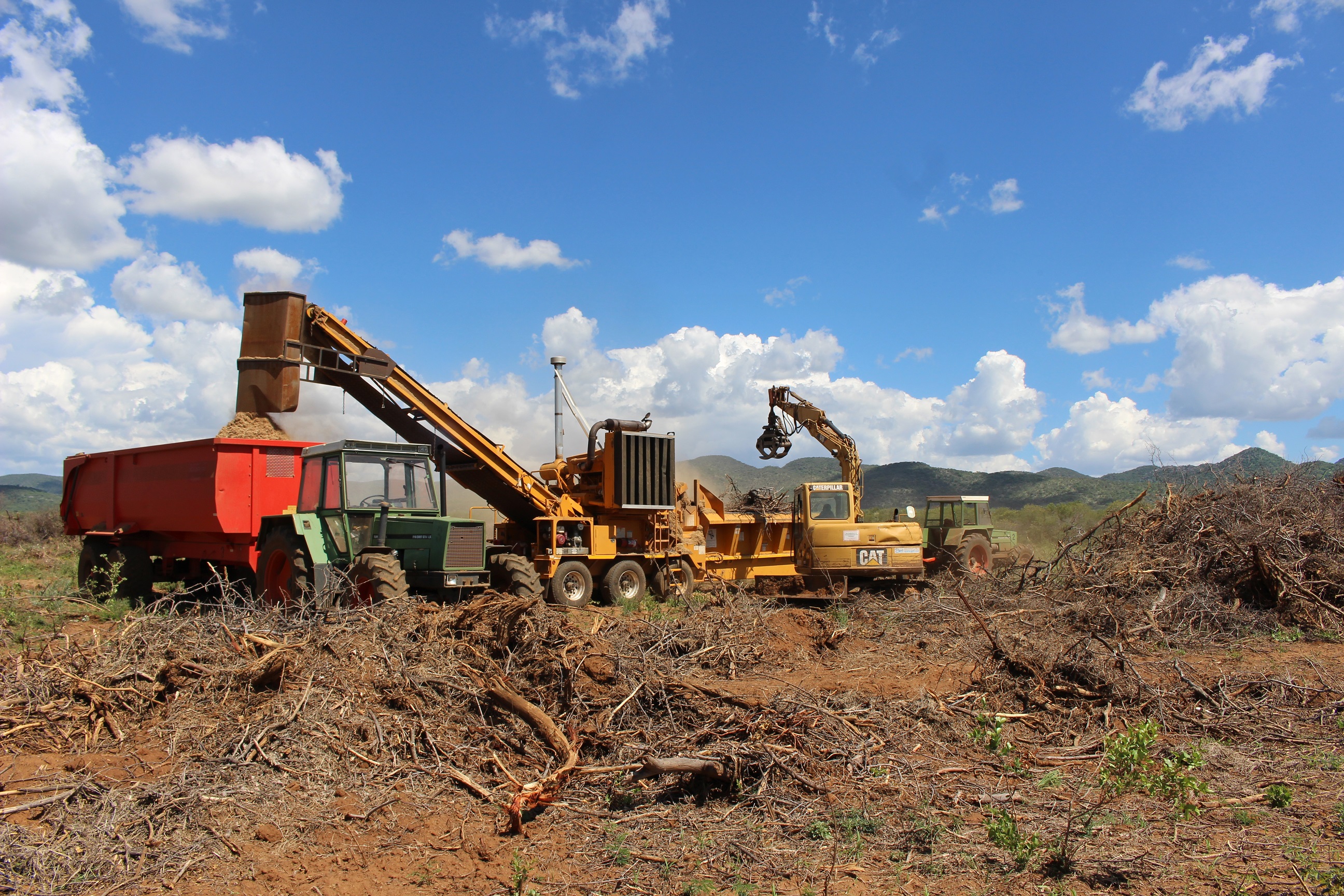ButoVal: Presentation of an innovative bush wood utilisation plant
 © Roland Keil / DLR Projektträger
© Roland Keil / DLR Projektträger
Coordinator: Trier University of Applied Sciences, Environmental Campus Birkenfeld, Institute for Applied Material Flow Management (IfaS)
Contact person: Dr Felix Flesch
Address: Campusallee 9926, 55761 Birkenfeld, Germany
Phone: 06782/172631
Email: f.flesch(at)umwelt-campus.de
Project partners in Germany
Project partners in Namibia
Namibia is facing progressive scrub encroachment into savannah landscapes, leading to the replacement of the original grassland vegetation. This threatens biodiversity and impairs agricultural productivity and water supply. The ButoVal project aims to stop the bush encroachment using socio-ecologically adapted measures and multi-functional land use. Changes in the vegetation in Namibia's savannahs is affecting agriculture, water supplies and biodiversity.

In this context, sustainable bush harvesting and processing offers opportunities for positive socio-economic developments in Namibia, by creating new jobs and training opportunities in rural areas. However, to date there has not been a technically and economically viable strategy for the sustainable utilisation of bush biomass. There are several reasons for this:
To address these issues, the ButoVal project team is testing various harvesting techniques and potential uses of bush biomass in order to establish it in existing markets. The focus is on the utilisation of biomass in the form of charcoal, wood for energy, and animal feed pellets (bush feed). This leads to new opportunities in terms of value creation and meeting the increasing international demand for wood pellets and wood chips.
New and adapted harvesting and processing techniques, combined with efficient logistics chains and the establishment of biomass industrial parks (BIP), are transforming the national problem of bush encroachment into a valuable resource with great socio-economic development potential. For rural regions in particular, utilising bush biomass offers new opportunities in terms of energy supply, jobs, education and economic development. The partner consortium is optimising all steps along the value chain – from harvesting and processing through to the successful marketing of the products.
For the first time within ButoVal, the various technologies needed along the entire value chain are being tested, adapted and optimised for commercial use at a central location, a biomass industrial park. Going far beyond what would be possible in a laboratory, this operates under real conditions. However, as a testing facility it is still flexible and the system configurations have not been finalised, so that they can serve as prototypes for large-scale commercialisation at a later stage.
The ButoVal approach has activities at various levels:
Central processing centres that bundle the various technologies do not yet exist in Namibia. However, these are crucial for overcoming technical and
economic hurdles to the utilisation of biomass and for enabling efficient value creation.
The project aims to establish a new market for sustainable investments in bush biomass so that the project results can be used even after it ends. Introducing new and customised technologies by German companies will increase the efficiency of harvesting and processing and facilitate regional dissemination. Further education and training programmes will also ensure that the necessary expertise is passed on to local and national stakeholders in order to ensure the technologies can be used in the longer term and to guarantee their further development.
 © Roland Keil / DLR Projektträger
© Roland Keil / DLR Projektträger